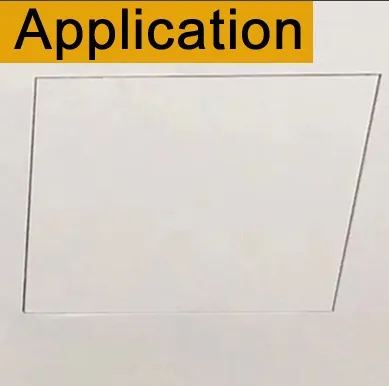Nov . 23, 2024 22:25 Back to list
Ceiling Hatch Cover for Easy Access and Maintenance Solutions
The Importance and Functionality of Ceiling Hatch Covers
Ceiling hatch covers are an essential component in modern architecture and design, providing convenient access to spaces above ceilings while ensuring the structural integrity of a building. Often overlooked in everyday discussions about building design, these hatches serve multiple purposes that extend beyond simple accessibility. This article delves into the functions, types, installation, and maintenance of ceiling hatch covers, highlighting their significance in both residential and commercial structures.
What is a Ceiling Hatch Cover?
A ceiling hatch cover is a removable panel installed in the ceiling of a building, allowing access to plenum spaces, attics, or mechanical areas. These hatches can be essential for building maintenance, as they provide workers with access to HVAC systems, electrical wiring, plumbing, and other essential utilities. Depending on the design and requirements of the building, ceiling hatches can vary significantly in size, type, and functionality.
Functions of Ceiling Hatch Covers
1. Accessibility The primary function of a ceiling hatch is to provide easy access to areas that would otherwise be difficult to reach. This is particularly crucial for maintenance teams who need to inspect or repair systems above the ceiling.
2. Space Utilization In many buildings, space above the ceiling is often underutilized. Ceiling hatch covers allow for better use of this space by enabling access to storage areas and other functional components of a building.
3. Safety and Compliance Ceiling hatches are designed to meet specific building codes and safety standards, ensuring they do not compromise the overall structural integrity of the ceiling. Properly installed hatches help prevent unauthorized access and can include safety features like fire-rated covers.
4. Energy Efficiency In environments where energy efficiency is a priority, ceiling hatch covers can play a role. Insulated hatches can help minimize energy loss, aiding in temperature control and reducing heating or cooling costs.
Types of Ceiling Hatch Covers
Ceiling hatches come in various designs, each tailored for specific applications
- Standard Access Hatches These are typically used in residential buildings for access to attics or overhead storage areas.
- Fire-Rated Hatches Designed to withstand high temperatures, these hatches are crucial in commercial buildings, especially in areas where fire safety regulations are strict.
- Acoustic Hatches Used in environments where sound control is necessary, acoustic hatches help prevent noise transmission between spaces.
ceiling hatch cover

- Custom Hatches Tailored for unique applications, custom hatches can be designed based on specific building needs, accommodating unusual sizes or additional features.
Installation Considerations
Proper installation of ceiling hatch covers is vital for ensuring functionality and safety. Here are several key considerations
1. Location Choosing the right location for a ceiling hatch is essential. It should be placed in a convenient area that allows easy access to the spaces above while not interfering with other architectural elements.
2. Type of Ceiling The style of the ceiling—whether it’s drywall, plaster, or acoustical—can impact the type of hatch that is compatible with the building design.
3. Weight Capacity Depending on what will be stored or accessed above the ceiling, the hatch needs to be capable of supporting the necessary weight.
4. Sealing and Insulation Proper sealing is essential to maintain energy efficiency and prevent air leaks. Insulated hatches are recommended in temperature-sensitive environments.
Maintenance of Ceiling Hatch Covers
To ensure longevity and optimal performance, regular maintenance of ceiling hatches is crucial. This includes
- Visual Inspections Periodically check hatches for any signs of wear, damage, or insufficient sealing.
- Cleaning Regular cleaning of the hatch surface and surrounding area helps prevent buildup that can affect the opening mechanism.
- Testing Mechanisms It is important to test the opening and closing mechanisms routinely to ensure they operate smoothly.
Conclusion
Ceiling hatch covers are integral to the functionality and safety of a building, providing essential access while contributing to overall energy efficiency and structural integrity. Understanding their importance and ensuring proper installation and maintenance can greatly enhance a building's usability and lifespan. For homeowners and builders alike, investing in high-quality ceiling hatch covers is not just an option; it is a necessity that pays dividends in the long run.
-
Quality Ceiling Trap Doors & Access Panels | Easy & Secure AccessNewsAug.30,2025
-
Durable Ceiling T Grid Systems | Easy InstallationNewsAug.29,2025
-
PVC Gypsum Ceiling: Durable, Laminated Tiles for Modern SpacesNewsAug.28,2025
-
Pvc Gypsum Ceiling Is DurableNewsAug.21,2025
-
Mineral Fiber Board Is DurableNewsAug.21,2025
-
Ceiling Tile Clip Reusable DesignNewsAug.21,2025







